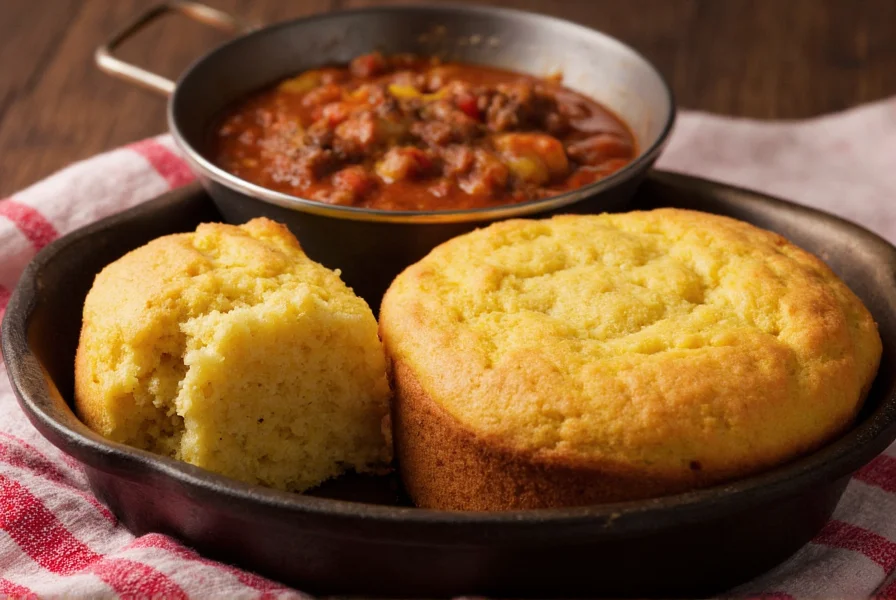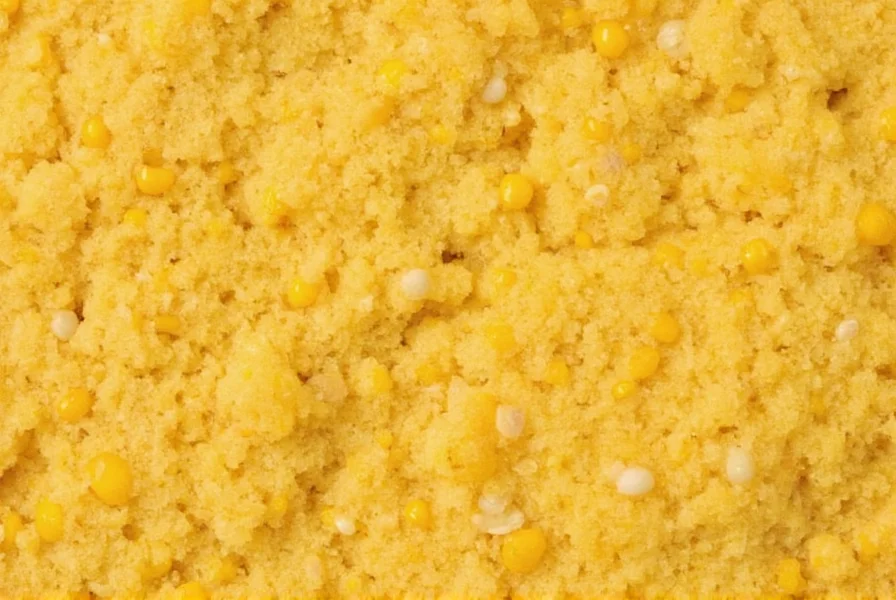When exploring what corn bread chili pairing works best, understanding the complementary relationship between these two comfort food staples is essential. The slightly sweet, crumbly texture of traditional cornbread provides the ideal counterpoint to the rich, savory, and often spicy profile of chili. This classic American food pairing has endured for generations because the elements balance each other perfectly.
The Science Behind the Perfect Cornbread and Chili Pairing
The magic happens through flavor contrast and textural harmony. Chili's deep, complex flavors—whether from beef, beans, or vegetables—find balance with cornbread's subtle sweetness. The starch in cornbread also helps temper the heat from chili peppers, making each bite more enjoyable without diminishing the chili's character.
Top Cornbread Varieties for Different Chili Styles
Not all cornbread works equally well with every type of chili. Consider these pairings for optimal results:
| Chili Type | Recommended Cornbread | Why It Works |
|---|---|---|
| Traditional Beef Chili | Cast-Iron Skillet Cornbread | The crispy edges and slightly dense texture stand up to hearty beef chili |
| Bean-Based Vegetarian Chili | Honey Cornbread | Sweetness complements earthy beans without overwhelming |
| Spicy Texas-Style Chili | Jalapeño Cheddar Cornbread | Additional heat and richness balances intense chili flavors |
| White Chicken Chili | Lemon-Zest Cornbread | Citrus notes brighten the creamy white chili base |
Texture Considerations for Cornbread Chili Pairing
Texture plays a crucial role in the corn bread chili experience. The ideal cornbread should have:
- A slightly crisp exterior from cast-iron cooking
- A tender, crumbly interior that doesn't become soggy
- Enough structural integrity to scoop chili without falling apart
Many home cooks make the mistake of creating cornbread that's too cake-like, which doesn't hold up to chili. Traditional Southern-style cornbread with a higher cornmeal-to-flour ratio provides the perfect sturdy-yet-crumby texture that works best with chili.
Temperature Matters: Serving Cornbread with Chili
For the optimal corn bread chili experience, serve both components hot but at slightly different temperatures. Your chili should be piping hot (165°F/74°C), while cornbread performs best when slightly cooled to about 140°F (60°C). This temperature difference prevents the cornbread from becoming soggy too quickly while still creating that delightful contrast of temperatures in each bite.

Regional Variations in Cornbread Chili Pairings
America's diverse culinary traditions have created regional approaches to the corn bread chili combination:
- Texas: Minimalist cornbread with just cornmeal, buttermilk, and salt to complement robust meat-centric chili
- Midwest: Sweeter cornbread often served with bean-heavy chili
- Southwest: Blue cornbread with added peppers that stands up to spicy New Mexican-style chili
- California: Artisanal variations with additions like roasted corn or herbs
Common Mistakes to Avoid with Cornbread Chili Pairing
Even experienced cooks sometimes miss the mark with this classic pairing. Avoid these common pitfalls:
- Serving cornbread that's too sweet with complex, meat-forward chili
- Using cornbread that's too dense and heavy, overwhelming the chili
- Serving cornbread cold or at room temperature with hot chili
- Adding too many mix-ins that compete with chili flavors
Perfecting Your Cornbread for Chili: Expert Tips
Professional chefs who specialize in American comfort food recommend these techniques for the best corn bread chili experience:
- Preheat your cast-iron skillet in the oven before adding batter for optimal crust formation
- Use a 60:40 cornmeal-to-flour ratio for the ideal balance of structure and tenderness
- Add a tablespoon of honey for subtle sweetness that complements rather than competes
- Let cornbread rest for 5-7 minutes after baking before serving to set the structure

Traditional Serving Methods for Cornbread with Chili
How you serve cornbread with chili affects the overall experience. Traditional approaches include:
- The Bowl Method: Place a square of cornbread in the bottom of the bowl before adding chili
- The Side-by-Side: Serve cornbread separately for dipping into chili
- The Topper: Crumble cornbread over the top of chili as a crunchy garnish
Food historians note that the bowl method represents the original working-class approach, where cornbread served as both side dish and edible utensil for scooping up chili.
Modern Twists on the Classic Cornbread Chili Pairing
Contemporary chefs are reimagining this classic pairing while respecting its fundamental principles. Successful modern variations include:
- Mini cornbread muffins served alongside individual chili portions
- Chili-stuffed cornbread bites for appetizer presentations
- Using cornbread as the base for chili-topped nacho-style creations
- Breakfast chili served with maple-cornbread pancakes
These innovations work because they maintain the essential flavor and textural contrast that makes the traditional corn bread chili pairing so satisfying.
FAQs About Cornbread and Chili Pairing
What's the best cornbread texture for chili?
The ideal cornbread for chili has a slightly crisp exterior with a tender, crumbly interior—not too cakey or dense. Traditional Southern-style cornbread with a higher cornmeal-to-flour ratio (about 60:40) provides the perfect structure that holds up to chili without becoming soggy, while still offering that satisfying crumble that mixes beautifully with each bite of chili.
Should cornbread be sweet when served with chili?
Traditional cornbread served with chili should have only subtle sweetness. While Northern-style sweeter cornbread works well with bean-heavy chili, most chili experts recommend a more balanced approach—just enough sweetness to contrast the savory chili without competing with its complex flavors. A tablespoon of honey or a small amount of sugar in the batter typically provides the ideal level of sweetness for most chili varieties.
How do I prevent cornbread from getting soggy in chili?
To prevent soggy cornbread when serving with chili, use these techniques: 1) Bake cornbread in a preheated cast-iron skillet for a crispier exterior, 2) Let cornbread rest for 5-7 minutes after baking to set its structure, 3) Serve cornbread slightly warmer than room temperature but not piping hot, 4) If placing cornbread in the bottom of the bowl, let it sit for 1-2 minutes before adding chili to create a slight barrier, and 5) Use a cornbread recipe with adequate fat content (like buttermilk or melted butter) which helps resist moisture absorption.
What regional cornbread styles work best with different chili varieties?
Regional pairings matter for authentic corn bread chili experiences. Texas-style meat-centric chili pairs best with minimalist Southern cornbread (just cornmeal, buttermilk, and salt). Midwest bean-heavy chili works well with slightly sweeter cornbread. Southwest spicy chili complements blue cornbread with added peppers. For white chicken chili, lemon-zest cornbread provides a bright contrast. Understanding these regional pairings helps create a more authentic and satisfying dining experience that respects the culinary traditions behind this classic American combination.











 浙公网安备
33010002000092号
浙公网安备
33010002000092号 浙B2-20120091-4
浙B2-20120091-4